Online Farming Course -Animal Health -Alternative education opportunity, for a part time qualification through elearning.
Do you want to learn how to care for the health and wellbeing of animals?
What the course can be used for:
- A foundation for a career in animal health or welfare
- Building your ability to better care for your own animals, whether as a farmer or pet owener
- A credit troward a certificate or diploma in animal science, agriculture or companion animal studies.
This has proven an exceptionally successful course for more than 15 years.
- studied by hundreds of people
- taught by leading veterinary and animal science experts
- continually being revised in response to feedback from professionals (eg. veterinrians, wildlife officers) and students.
Student Comment:
" I cannot praise the animal health care course highly enough. I have learned a great deal, far beyond my expectations" G. Kite
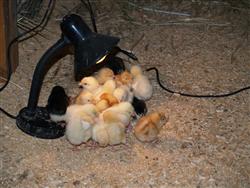 COURSE STRUCTURE
COURSE STRUCTUREThere are twelve lessons as follows:
- Introduction to Animal Health Care
- nature and scope of veterinary services
- private veterinary practices
- other veterinary services; laboratories, quarantine, agriculture departments, pharmaceutical companies, educational, etc
- other animal services; breeders, holiday care, etc.
- animal welfare and control
- veterinary services
- code of practice
- terminology
- transporting animals
- Common Health Problems in farm animals and pets
- causes of ill health
- injury
- conditions
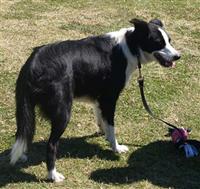 nutritional problems
nutritional problems - living organisms
- parasites
- family pets common conditions
- dogs
- cats
- caged birds
- aquarium fish
- mice
- wild animals common conditions
- reptiles
- Animal Behaviour
- communication in dogs
- scent
- barking
- body language
- handling cats
- bird language
- types of behavior
- time orientation
- space orientation
- territorial behavior
- aggression
- horse psychology
- Signs of Ill Health
- vital signs
- the healthy animal
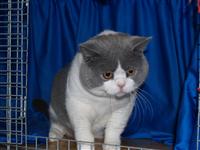 signs & symptoms of diseases
signs & symptoms of diseases - recognising ill health
- diagnosis of diseases
- taking smears
- taking tissue samples
- diagnosis and control of different types of diseases including
- viruses
- bacteria
- protozoa
- parasites
- mites
- fleas
- Veterinary Facilities
- types of facilities; clinic, hospital, mobile facility, emergency facility,etc
- first aid kit; aids for diagnosis, instruments, medicines, preparations, etc
- record management
- enclosure for animals
- environmental requirements
- Safety Procedures
- duty of care
- lifting heavy weights
- reducing back injury
- protective equipment
- dealing with chemicals
- skin penetrating injuries
- risk categories
- separating animals
- disposal of dead/infected tissues
- dangerous non-animal wastes
- storage and handling of medicines
- handling larger animals
- Administration of Animal Health
- animal insurance
- quarantine
- importing animals
- managing a veterinary office
- telephone usage
- record keeping
- filing information
- Animal First Aid
- types of wounds
- cuts
- punctures
- tears
- treating and cleaning wounds
- granulating wounds
- stitching a wound
- bone and joint problems
- broken bones
- tendon injury
- poisoning
- restraining animals during first aid
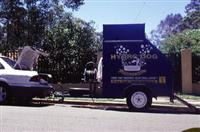 restraining cats
restraining cats - restraining dogs
- restraining horses
- restraining cattle
- restraining sheep
- Preventative Health Care
- preventing ill health
- balanced diet
- insect control
- dip
- vaccination
- Comparing natural active immunity, artificial active immunity, natural passive immunity, and artificial active immunity
- tetnus antiserum
- types of vaccines
- alternatives to vaccination
- avoid stressing livestock
- Routine Health Treatments
- desexing
- castration
- vasectomy
- spaying
- tubal ligation
- castration of cats
- dogs
- pregancy
- gestation periods
- euthanasia
- anaesthesia and analgesia
- preparing an animal for surgery
- sterilising equipment
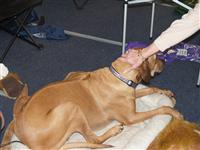 castrating a colt
castrating a colt
- Health Problems in Domestic Pets
- burns
- urinary tract infections;
- shock
- electrolytes
- ticks
- reptiles
- fish problems
- Rehabilitation Care
- scope of rehabilitation
- planning a recovery
- animal nursing
- the hospital pen
- monitoring temperature, pulse, respiration
- enclosures
Who developed and teaches this course?
All academic staff are and have always been highly qualified professional animal experts with years of experience. They include:
All academic staff are and have always been highly qualified professional animal experts with years of experience. They include:
- Dr Gareth Pearce - Experienced veterinary scientist and head of veterinary studies at Cambridge University, U.K.
- Dr James Euclid - A Melbourne (Aust.) based vet.
- Peter Douglas - Former University of Queensland lecturer in animal health and wildlife park manager.
- Michele Cullen - Farm manager, Former Stock and Meat Inspector, Land Care specialist, Teacher, and horse breeder with 30 years of experience in various animal industries.
Aims
- To be able to describe the scope of services offered by animal care services, including veterinary practices.
- Describe common health problems in various animals, including injuries & diseases, causes of ill health, problems in family pets
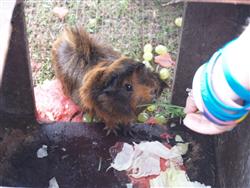 Explain the natural behaviour of different types of domestic animals in different situations, natural behaviour of animals, problems in wild animals, behaviour in domestic animals
Explain the natural behaviour of different types of domestic animals in different situations, natural behaviour of animals, problems in wild animals, behaviour in domestic animals- Identify common signs of ill health in different animals - vital signs, the healthy animal, signs & symptoms of disease, diagnosis & control of diseases
- Describe the purposes of different facilities used in veterinary practice, the first aid kit and enclosures for animals
- Determine safety procedures for a veterinary practice, including workplace safety, and health & safety for veterinary practices
- Describe different administration procedures in a veterinary practice - animal insurance, legal considerations, and managing a veterinary office
- Describe/select first aid procedures/treatments for different animals in response to common health problems in animals - types of wounds, and treatments
- Describe requirements for maintaining good health in domestic animals, including nutrition & preventative medicine - preventing ill health, types of vaccinations, preparing animals for vaccinations etc
- To develop an understanding of routine treatments for healthy animals - de-sexing, managing a pregnancy, euthanasia, analgesia etc
- Develop a broader awareness of health problems and their treatment in domestic pets - ticks, Australian animals, birds, reptiles, fish
- Develop skills in caring for animals prior to, during or after treatment - planning a recovery and animal nursing
SCOPE OF STUDIES - ANIMAL WELFARE & CONTROL
People have domesticated animals for various reasons, in particular, as pets (to keep them company), and as farm animals (to either work or to provide a product such as meat, wool or dairy produce). Whatever the reason animals are being kept, it is now well accepted that the owners of any animal have a responsibility toward the animal they keep. That responsibility is both a matter of ethics, and increasingly is also a matter of law.
VETERINARY SERVICES
These may include:
- The General Practice Vet
- Specialist Vets
- Pathology Laboratories
- Animal Hospitals
- Government Veterinary Services
- Pharmaceutical Departments
- Educational and Research Organisations.
Veterinarians are scientists who have university level training. They are highly skilled professionals.
They are commonly supported/assisted by veterinary assistants or nurses who may work in any or all of the following areas:
- Reception and general office duties
- Medical nursing -including investigative procedures
- Surgical nursing
- General cleaning
- Technical maintenance
Traditionally, veterinarians have employed people at various levels to undertake different combinations of these tasks. The lowest level has been an "Animal attendant" or "Trainee veterinary nurse" who has been responsible for tasks such as:
- Basic office duties such as answering the greeting customers, answering the phone, typing, processing mail etc.
- Basic animal care such as grooming, feeding, cleaning and restraining (eg. placing animals in a cage, or holding them during an examination).
An Animal attendant would normally be closely supervised in their duties, by a veterinary nurse or a veterinarian. An animal attendant might not necessarily have any formal training; but people employed as such are often expected to pursue a course of training to develop further skills and qualify them to work at a higher level as a trainee veterinary nurse, and eventually a qualified veterinary nurse.
EXAMPLES OF WHAT YOU WILL DO IN THIS COURSE (Some -not all)
 Learn to care for the health of any type of animal (focus is on mammals and birds) and understand the scope of services offered by animal care services, including in veterinary practices. 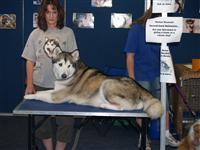 This course is appropriate for anyone interested in working with animals including on a farm, a wildlife park or a veterinary practice. It is a sound foundation course and designed to cover most of what is found in a typical veterinary assistants course in many countries around the world. This course is appropriate for anyone interested in working with animals including on a farm, a wildlife park or a veterinary practice. It is a sound foundation course and designed to cover most of what is found in a typical veterinary assistants course in many countries around the world. |
ليست هناك تعليقات:
إرسال تعليق